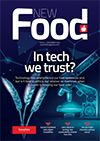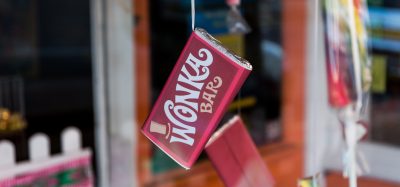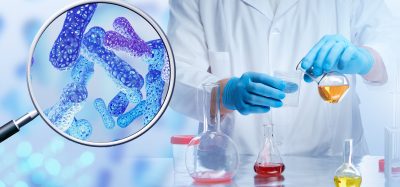Use of stable isotope analysis in commercial food authenticity testing
- Like
- Digg
- Del
- Tumblr
- VKontakte
- Flattr
- Buffer
- Love This
- Odnoklassniki
- Meneame
- Blogger
- Amazon
- Yahoo Mail
- Gmail
- AOL
- Newsvine
- HackerNews
- Evernote
- MySpace
- Mail.ru
- Viadeo
- Line
- Comments
- Yummly
- SMS
- Viber
- Telegram
- Subscribe
- Skype
- Facebook Messenger
- Kakao
- LiveJournal
- Yammer
- Edgar
- Fintel
- Mix
- Instapaper
- Copy Link


About this webinar
The constant race between food fraud and food testing drives technological and methodological developments in the sector. Meeting the speed, versatility and quality requirements from the industry has made stable isotope analytics as a commercial service a reality.
In this webinar, Dr. David Psomiadis, Laboratory Manager at Imprint Analytics GmbH, discusses the use of stable isotope analysis to determine the geographic origin of food and the authenticity of food ingredients.
This educational webinar gives an overview of the principles of isotope analysis, including, how it works and what influences results, supported by an explanation and interpretation of data from a variety of food and beverage matrices.
Keynote speaker


Laboratory Manager
Imprint Analytics GmbH
Dr. David Psomiadis holds a PhD in geology using stable isotopes to interpret changes of the past, as well as in applied science in the areas of food and environment. Since 2013, he has been Laboratory Head at Imprint Analytics.
Supported by:
![]()
![]()
Thermo Fisher Scientific has advanced instrumentation that can help in the area of food adulteration to determine the known and unknown contaminants of the food and beverage product. Their state of the art products help labs check for the adulteration of edible oils to fruit juices and many other products. Their instruments help government agencies and contract laboratories determine if a particular product has been adulterated.
More in this webinar series…
Can we perform gelatin speciation and adulteration using bioinformatics, proteomics and high resolution mass spectrometry?
Date: 27 April 2017 | Time: 15.00 BST
Speaker: Dr Francis Beaudry, University of Montreal, Canada
Charged aerosol detection for LC analysis of triglycerides: A novel tool for extra-virgin olive oil characterisation
Date: 9 May 2017 | Time: 15.00 BST
Speaker: Professor Lanfranco Conte, Dept. of Agri-Food, Environmental and Animal Sciences, University of Udine
When honey is not all honey and other tales of food adulteration: Ion chromatography as a tool for detecting food fraud
Date: 7 June 2017 | Time: 15.00 BST
Speaker: Dr. Jeff Rohrer, Thermo Fisher Scientific
Chemical profiling and differential analysis of whiskies using Q Exactive™ GC Orbitrap™ GC-MS/MS
Date: 11 July 2017 | Time: 15.00 BST
Speaker: Dominic Roberts, Thermo Fisher Scientific
The rest of this content is restricted - login or subscribe free to access


Why subscribe? Join our growing community of thousands of industry professionals and gain access to:
- bi-monthly issues in print and/or digital format
- case studies, whitepapers, webinars and industry-leading content
- breaking news and features
- our extensive online archive of thousands of articles and years of past issues
- ...And it's all free!
Click here to Subscribe today Login here









” Not being a philosopher or a physicist, I’m not likely to look into that subject in print, but I let you know that, coming from a marketing standpoint, the net marketing effect to the business stated earlier was obviously a big fat zero. When similar situations arise all cars in front with the leader should pass the pace car and tag to the rear in the pack. Skinny Jeans – This piece will invariably remain stylish since its flatters all body shapes and sizes.
Hi, can I obtain the presentation / slides / proceedings of the talk, please? (IT restrictions do notallow me to watch the talk.) Thank you.
Hi Jerry
Thank you for getting in touch. We have replied to you directly via email.
Do you have any information for me on laboratories who can test for all those parameters on food fraud. We would like to have partnership with other labs.
thank you!
I would like to meet more companies in this field, as well. My company O2 Isotope and Analytical also performs CSIA testing, fingerprinting foods and soils. Will we ever get to a point where the data we all generate are shared?
Hi Anne-Marie,
Not sure where you’re located, but a soon-to-be-published volume on Food Forensics (Stable Isotopes as a Guide to Authenticity and Origin) may be helpful in identifying various individuals and groups working globally in the field of food isotope analysis.
https://www.crcpress.com/Food-Forensics-Stable-Isotopes-as-a-Guide-to-Authenticity-and-Origin/Carter-Chesson/p/book/9781498741729
(Yes, I was a co-editor on the volume. Yes, I authored/co-authored some chapters.)
You might also try reviewing a summary of the TRACE (Tracing Food Commodities in Europe) project, which ran from 2005 to 2009. There were several isotope analysis facilities involved, which are listed, with contact names, in the link –
http://cordis.europa.eu/project/rcn/78480_en.html
Hope this is helpful!